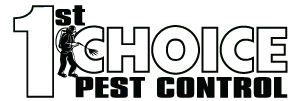How Pest Infestations Can Affect Your Home Insurance: Essential Information
Your home is your sanctuary, but it’s not immune to the persistent threat of pest infestations. From rodents to termites and bed bugs, these unwelcome visitors can wreak havoc on your property, causing damage and posing health risks.
What many homeowners may not be aware of is how these pest infestations can impact their home insurance. In this insightful guide, we’ll explore the often-overlooked intersection of pest infestations and home insurance policies. Pest-related damage can be a costly ordeal, but understanding how it fits into your insurance coverage is crucial. Are you covered for the damage caused by termites or the removal of stubborn bed bugs?
What are the limitations and exclusions in your standard home insurance policy? Join us as we delve into the complexities of pest-related insurance issues, offering clarity on how infestations can affect your coverage and what proactive steps you can take to protect your home.
Whether you’re a seasoned homeowner or a first-time buyer, this information is essential for safeguarding your most significant investment and peace of mind.
Types of Pest Infestations
Pest infestations come in various forms, each with its unique set of challenges and potential consequences for homeowners. Understanding the types of pest infestations that can affect your home is essential. Here are some common pests that homeowners may encounter:
A. Rodent Infestations: Rodents like rats and mice are notorious for seeking refuge in homes, especially during colder months. They can cause structural damage, contaminate food, and pose health risks due to their droppings and urine.
B. Termite Infestations: Termites are silent destroyers, known for consuming wood and causing extensive structural damage. Often, the damage caused by termites is not covered by standard home insurance policies.
C. Bed Bug Infestations: Bed bugs are small, elusive insects that feed on human blood while we sleep. Their bites can lead to discomfort and allergic reactions, and infestations can be challenging to eradicate.
D. Pest Invasions in Gardens and Landscaping: Outdoor spaces are not immune to pest infestations. Pests like aphids, beetles, and moles can damage plants, lawns, and landscaping features, affecting curb appeal.
E. Wildlife Intrusions: Larger pests, including raccoons, squirrels, and birds, may find their way into attics, crawl spaces, or gardens. They can cause property damage and create nuisances.
Understanding the specific pest threats in your area and the potential risks they pose to your home is the first step in effective pest management. In the following sections, we will explore how pest infestations can impact your home insurance and the steps you can take to protect your property and finances.
Pest-Related Damage and Home Insurance
Pest infestations can lead to a range of damages, from structural issues to property loss, and even health concerns. However, the extent to which your home insurance policy covers pest-related damage can vary significantly. Here’s what you need to know:
A. Limitations in Standard Home Insurance Policies: In most cases, standard home insurance policies are designed to cover sudden and unexpected perils, such as fires, natural disasters, and theft. Unfortunately, damage resulting from gradual and preventable issues, like pest infestations, is often excluded.
B. Covered vs. Non-Covered Damage: Home insurance typically covers the sudden and accidental damage caused by pests, like a burst pipe resulting from rodent gnawing. However, the cost of pest removal and damage repair may not be covered.
C. Termites and Bed Bugs: Termites are a common concern for homeowners, as they can cause extensive damage over time. Unfortunately, termite damage is often considered a maintenance issue and is not covered by insurance. Similarly, bed bug infestations and their associated costs are typically not covered by standard policies.
D. Specialized Pest Coverage: Some insurance companies offer specialized pest coverage or endorsements that homeowners can purchase to protect against specific pest-related damage. These endorsements can be beneficial for those in high-risk areas.
E. Pest Inspections and Maintenance: Homeowners are usually responsible for regular pest inspections and preventative measures. Neglecting these responsibilities may lead to denied claims, as insurance companies often expect homeowners to take reasonable steps to prevent infestations.
Understanding the limitations of your home insurance policy regarding pest-related damage is crucial. It’s essential to review your policy, ask your insurance provider about any available endorsements, and take proactive steps to prevent and address pest infestations.
In the next sections, we will delve into effective prevention and mitigation strategies, as well as specialized pest coverage options that can help you protect your home and finances.
Prevention and Mitigation Strategies
Preventing pest infestations and addressing them promptly is key to protecting your home and finances. Here are some strategies to consider:
A. Regular Inspections: Schedule regular pest inspections by professionals to catch infestations early and prevent extensive damage.
B. Seal Entry Points: Seal cracks, gaps, and potential entry points where pests can infiltrate your home.
C. Maintain Cleanliness: Keep your home clean and well-maintained, as pests are often attracted to food residue and clutter.
D. Store Food Securely: Store food items in airtight containers to prevent access to pests like rodents and pantry pests.
E. Address Moisture Issues: Fix leaks and moisture problems promptly, as damp areas can attract pests like termites and cockroaches.
F. Pest-Resistant Landscaping: Choose pest-resistant plants for your garden and maintain a distance between vegetation and your home.
V. Specialized Pest Coverage: While standard home insurance policies may not cover all pest-related damage, it’s worth exploring specialized pest coverage options:
A. Pest Endorsements: Some insurance companies offer endorsements or riders specifically designed to cover certain pest-related damages. These endorsements can provide additional protection.
B. Pest Control Contracts: Consider pest control contracts or service agreements with reputable pest control companies. These contracts may cover specific treatments and damage repair related to pests.
Making Pest-Related Insurance Claims
If you do experience pest-related damage, follow these steps when making insurance claims:
A. Document the Infestation: Keep records of the infestation, including photographs, pest control reports, and repair estimates.
B. Review Your Policy: Review your insurance policy to understand what may or may not be covered.
C. Contact Your Insurance Provider: Contact your insurance provider to initiate a claim and provide all necessary documentation.
Conclusion
Pest infestations can be a homeowner’s nightmare, causing damage to your property and potentially impacting your finances. Understanding how pest infestations can affect your home insurance coverage is crucial for safeguarding your investment.
While standard home insurance policies may have limitations regarding pest-related damage, proactive prevention, regular maintenance, and exploring specialized pest coverage options can provide the protection you need.
Remember that a pest-free home not only ensures your peace of mind but also contributes to a healthier and more comfortable living environment. By implementing prevention strategies and staying informed about your insurance coverage, you can maintain a pest-free and insurable home.
For more information on pest control and insurance-related topics, feel free to reach out to 1st Choice Pest Control, your trusted partner in pest management and home protection.

